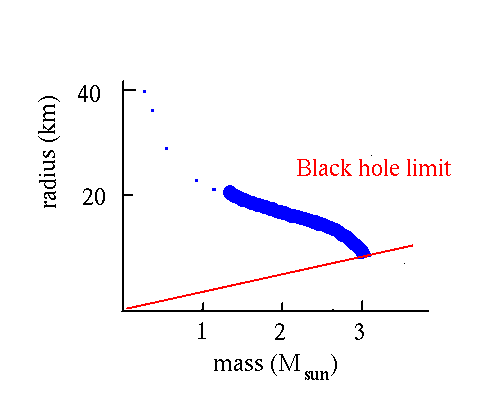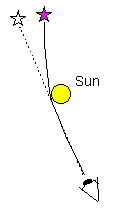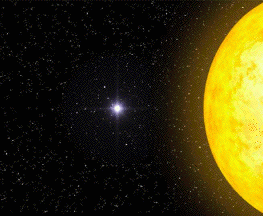Black Hole Stellar Remains
Key points: What a black hole is; event
horizon; how we detect black holes
What is a black hole?
We can estimate the size of the event horizon from the escape velocity

M = the mass of the central object; R = distance of orbiting object
At what R does the escape velocity = c , the speed of light?
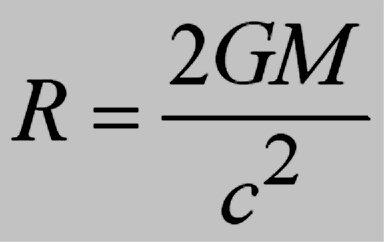
This R is called the Schwarzschild radius; it defines the position of
the event horizon.
For an object with M = 6 M , R = 18 kilometers!
, R = 18 kilometers!
So black hole with a stellar type mass will have a "radius" of
only a few tens of km, even smaller than a neutron star.
Close to the black hole, an improved
theory of gravity, Einstein's General Theory of Relativity is needed to make calculations
of how objects move; it would also slightly modify our calculation of
where the event horizon is. The influence of gravity on light is included in this theory.
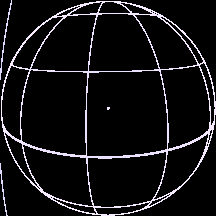 |
It predicts that time viewed from the outside will slow to
a standstill as we watch something collapse into the event horizon, and that the photons
it emits will be shifted progressively more and more to the red as they lose energy
escaping from the huge gravitational field. Thus,
if we could watch a star collapse into a black hole, it might look like the
simulation to the left. The infall seems to stop at the event horizon, where we get a
frozen, dim red view of the surface of the dead star! Stellar remnant black holes are
therefore sometimes called "frozen stars." (From Univ.
Colorado, http://casa.colorado.edu/~ajsh/movies.html) |
Einstein's theory states that if we were falling into the black hole, we
would find no slowing down in time and would just plunge through the event horizon (and be
torn apart by tidal forces). Thus, the appearance of the collapse of the star
depends completely on how and where we observe it
What happens if you are a some larger distance from a black hole?
Newton's Law of gravity will apply: F = GMm/r2
But you will probably be surprised to feel such a strong gravitational
force from what may appear to be empty space! In fact, at first it may not be obvious
where the black hole is (From R. Nemiroff, http://antwrp.gsfc.nasa.gov/htmltest/rjn_bht.html):
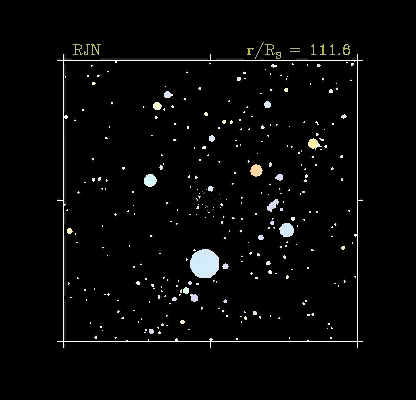 |
It's over there! And we're getting closer. |
 |
It becomes very obvious when we go into orbit around it -- look at
the results of the light from background stars being deflected! |
-- Look for x-ray emission
-- Although black holes are really black, when matter falls
into them it can heat up so much it glows in x-rays
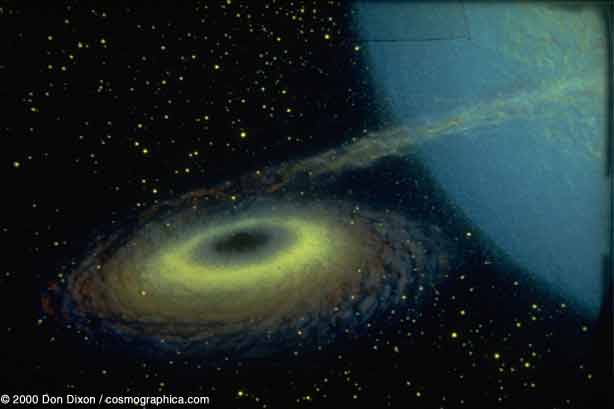 |
Gas pulled from the companion star into the gravitational
field of the black hole heats up as it orbits inwards. The gas doesn't just fall straight
in because of angular momentum -- the amount of rotational energy it has. The gas closest
to the black hole can get so hot that it emits x-rays. The disk of gas is called an
"accretion disk". (Illustration by Don Dixon; animation from J.
Blondin http://wonka.physics.ncsu.edu/~blondin/AAS/) |
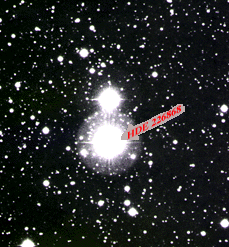 |
One of the best examples is the apparently ordinary hot star HDE
22685. Not only is it a bright X-ray source, but it is a spectroscopic binary with an unseen companion with M > 3M , which is therefore likely to be a black hole. The
system is shown to the left. (from Imagine the Universe, http://imagine.gsfc.nasa.gov/docs/science/know_l2/black_holes.html) , which is therefore likely to be a black hole. The
system is shown to the left. (from Imagine the Universe, http://imagine.gsfc.nasa.gov/docs/science/know_l2/black_holes.html) |
Another way to find black holes is to look for spectroscopic binaries
where one star is invisible and where the velocities imply that a very massive object must
be present (essentially the same as above but without the requirement that an
"accretion disk" of hot gas be present).

Postage stamp celebrating Chandrasekhar's theory of white dwarfs |

|

Simulation of effect of a nearby supernova on a star like the sun. http://www.pnl.gov/energyscience/
|
Click to return to syllabus |
| Click to return to White Dwarfs and Neutron Stars |
hypertext  G. H. Rieke G. H. Rieke |
Click to go to Novae and Supernovae |
